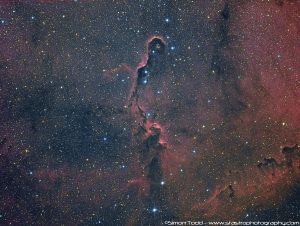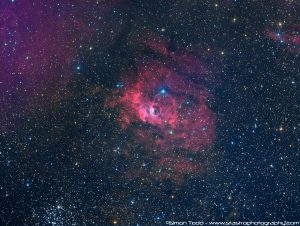IC1396 – Elephant’s Trunk Nebula in Hubble Palette Narrowband
Image consists of
15x 600S – 7nm HA
15x 600s – 7nm OIII
15x 600s – 7nm SII
HA Layer was also used as Luminance and Overlay layer
All data was obtained over five nights, 7th and 8th September 18th September, 22nd September and 23rd September 2016
Equipment Used:
Imaging Scope: Sky-Watcher Quattro 8-CF 8″ F4 Newtonian
Guide Scope: Celestron Telescopes C80ED
Imaging Camera: Atik Cameras 383L+ Mono CCD Cooled to -20C
Guide Camera: Qhyccd 5L-II
Mount: Sky-Watcher EQ8 Pro
Capture Software: Main Sequence Software Sequence Generator Pro
Guide Software: PHD2
Dark/Flat Subtraction and Stacking: Maxim-DL
Post Processing: Photoshop
To date I think this is my best image so far, I am very happy with the results of the image and the colour balance obtained








